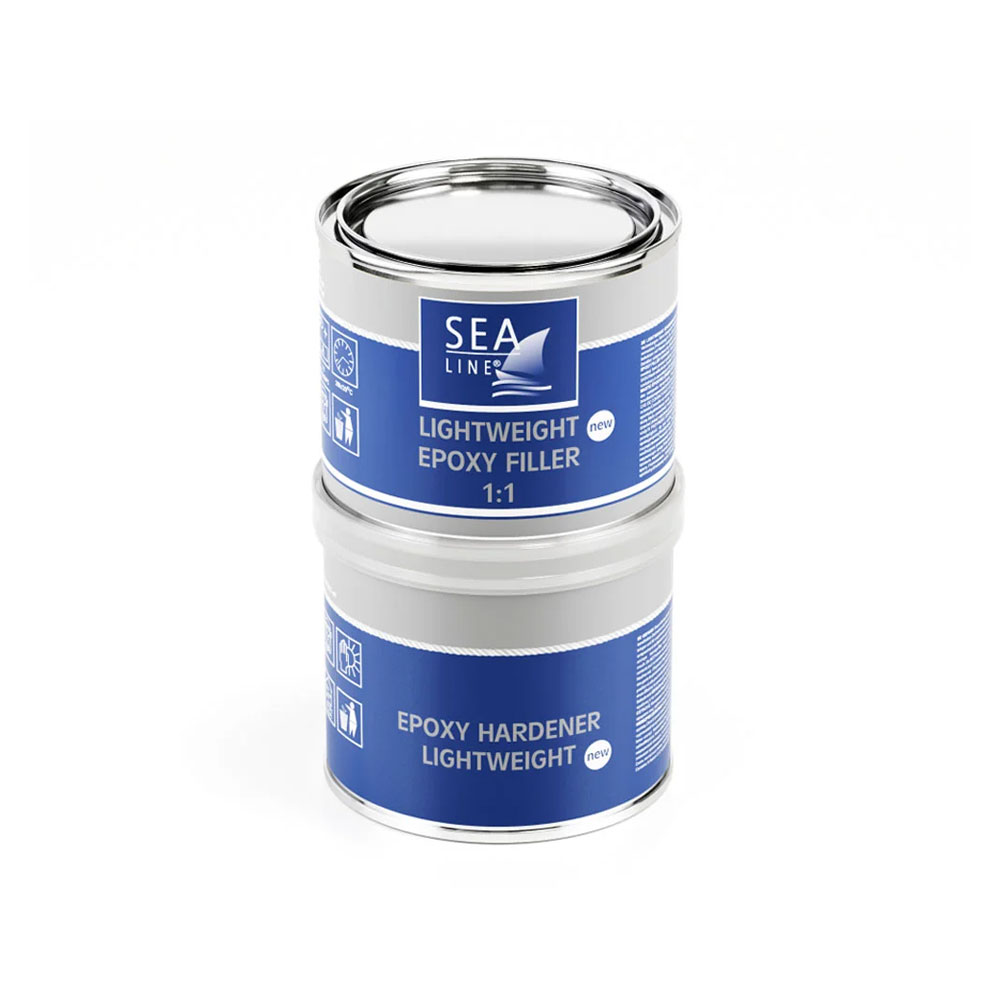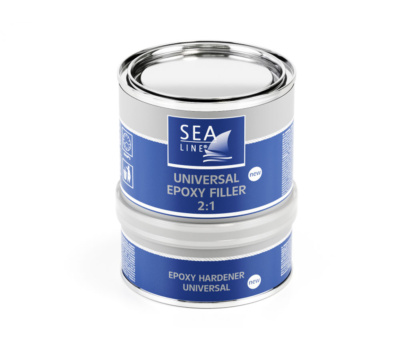Recommended for large areas due to low own weight
| Capacity | Code |
|---|---|
| 750 ml | 12202 |
| 7,5 l | 12288 |

| Type | laminate, wood, stell, aluminium |
| Place | above and below waterline |
| Function | large areas |
| Weight | 1l = 700 g |
| Aplication | putty knife |
| Kolor | off white |

Epoxy fillers are primarily the only fillers recommended for use on hull components constantly immersed

Epoxy fillers, including fiberglass filler, are primarily the only fillers truly recommended for use both

Gelcoat Filler is very fast hard and easy in use.
If the scratches are not deep, then we can renew the scratched side by polishing with Sea-Line polishing pastes. Above the waterline, when the scratches are not deep, the surface can be repaired with a DRY FAST gel coat filler. Deep scratches should be filled with epoxy filler (selected depending on the requirements of the scratched surface), painted with a primer and then painted with topcoat.
Sea-Line HARD and Sea-Line self-polishing antifouling are not intended for aluminum surfaces. They include copper oxide, which in contact with aluminum causes galvanic corrosion. Especially on aluminum, we offer ALU-PLUS self-polishing anti-fouling paint, which, in addition to excellent adhesion to aluminum, is also 30% more effective than traditional anti-fouling paints.